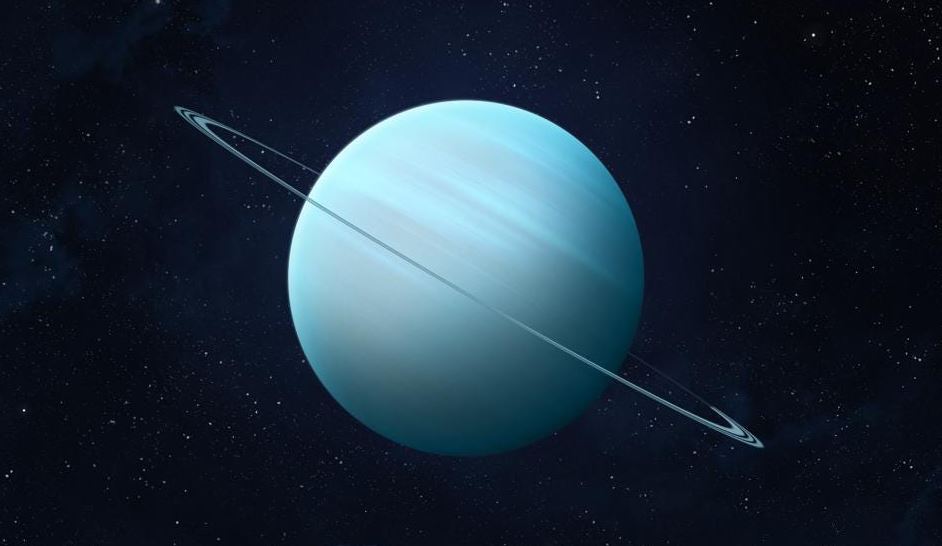How Long Does It Take to Get to Uranus
Uranus, the seventh planet from the Sun, is a captivating celestial body with its unique blue-green color and mysterious atmosphere. If you've ever wondered about the time it takes to reach Uranus, this article will provide insights into the journey and the factors that influence travel time.
Understanding the Distance to Uranus
Before we delve into the specifics, let's grasp the vast distances involved in interplanetary travel. Uranus is located at an average distance of about 2.9 billion kilometers (1.8 billion miles) from Earth. To put this into perspective, it is approximately 19 times the average distance between the Earth and the Sun, which is about 149.6 million kilometers (93 million miles).
Traveling to Uranus with Current Technologies
Reaching Uranus with current technologies presents unique challenges due to its considerable distance from Earth. The time it takes to reach Uranus depends on several factors, including the launch window, spacecraft speed, trajectory, and the use of gravity assists.
On average, a direct mission to Uranus using conventional propulsion systems would take approximately 9 to 12 years. This estimate includes the time required to escape Earth's gravity, perform course corrections, and enter into Uranus' orbit.
Historical Missions to Uranus
To date, no spacecraft has been sent specifically to Uranus. The Voyager 2 mission, launched in 1977, conducted a flyby of Uranus in 1986 as part of its grand tour of the outer planets. Voyager 2 provided valuable insights into Uranus' atmosphere, magnetosphere, and its system of rings and moons. The spacecraft took approximately 9 years to reach Uranus after its launch.
Future Missions and Possibilities
While there are currently no specific missions planned to return to Uranus, the prospect of future missions remains an exciting area of exploration. As technology advances and our understanding of the outer solar system deepens, there may be future missions dedicated to studying Uranus more comprehensively. These missions could provide unprecedented insights into the planet's composition, atmosphere, and the mysteries that lie within.
The Challenge of Deep Space Exploration
Reaching Uranus and other outer planets poses significant challenges due to the immense distances and extended travel durations involved. Advanced propulsion systems, such as ion propulsion or nuclear propulsion, may offer potential solutions to reduce travel time. These technologies are being studied and developed for future interplanetary missions.
Exploring the Enigmatic Uranus
Uranus, with its unique characteristics and intriguing mysteries, offers a treasure trove of scientific exploration. Let's delve into some of the captivating aspects that make Uranus a destination of immense interest.
Uranus' Tilted Axis
One of the most striking features of Uranus is its extreme axial tilt, which causes the planet to appear to roll on its side. This tilt results in peculiar seasonal variations and a highly dynamic atmosphere. Studying Uranus' unique axial tilt provides insights into the planet's formation and the dynamics of its atmosphere.
The Atmosphere of Uranus
Uranus' atmosphere is composed primarily of hydrogen and helium, similar to Jupiter and Saturn. However, Uranus has a higher proportion of methane, which gives the planet its characteristic blue-green hue. Investigating the composition, weather patterns, and cloud formations in Uranus' atmosphere provides valuable insights into the dynamics of gas giants and their complex atmospheric processes.
Uranus' Rings and Moons
Uranus possesses a system of rings and a retinue of fascinating moons. The rings, although less prominent than Saturn's, offer insights into the dynamics of ring systems and their interactions with the planet's gravity. The moons of Uranus, including Miranda, Titania, and Oberon, showcase a variety of geological features, such as craters, canyons, and icy surfaces. Exploring these moons deepens our understanding of the satellite systems within our solar system.
Magnetic Field and Magnetosphere
Uranus has a unique and puzzling magnetic field. Unlike the magnetospheres of other planets, Uranus' magnetic field is tilted and offset from its rotational axis. The cause of this unusual magnetic configuration is still not fully understood. Investigating Uranus' magnetic field provides valuable insights into the dynamo processes that generate planetary magnetic fields and the interaction between the planet and its surrounding space environment.
Future Missions and Discoveries
While no specific missions are currently planned to revisit Uranus, there is ongoing interest in exploring this enigmatic planet further. Future missions could involve orbiters or even landers that would provide more comprehensive studies of Uranus' atmosphere, magnetosphere, rings, and moons. These missions would offer unprecedented opportunities to unravel the mysteries of Uranus and expand our understanding of the outer reaches of our solar system.
The Never-Ending Quest for Knowledge
Reaching Uranus may require extended travel times with current technologies, but the discoveries and insights gained from exploring this distant planet are immeasurable. Uranus' unique characteristics, including its tilted axis, dynamic atmosphere, rings, and moons, offer endless opportunities for scientific exploration. Each mission, past, present, and future, takes us one step closer to unraveling the mysteries of Uranus and deepens our understanding of the vast wonders of our universe.
Conclusion
In conclusion, the time it takes to reach Uranus is approximately 9 to 12 years with current technologies. The vast distance and the complexity of deep space exploration make it a challenging but exciting endeavor. While historical missions like Voyager 2 have provided valuable data, there is much more to learn about Uranus. As our exploration of the outer solar system progresses and future missions are planned, each step brings us closer to unraveling the mysteries of this fascinating planet.

